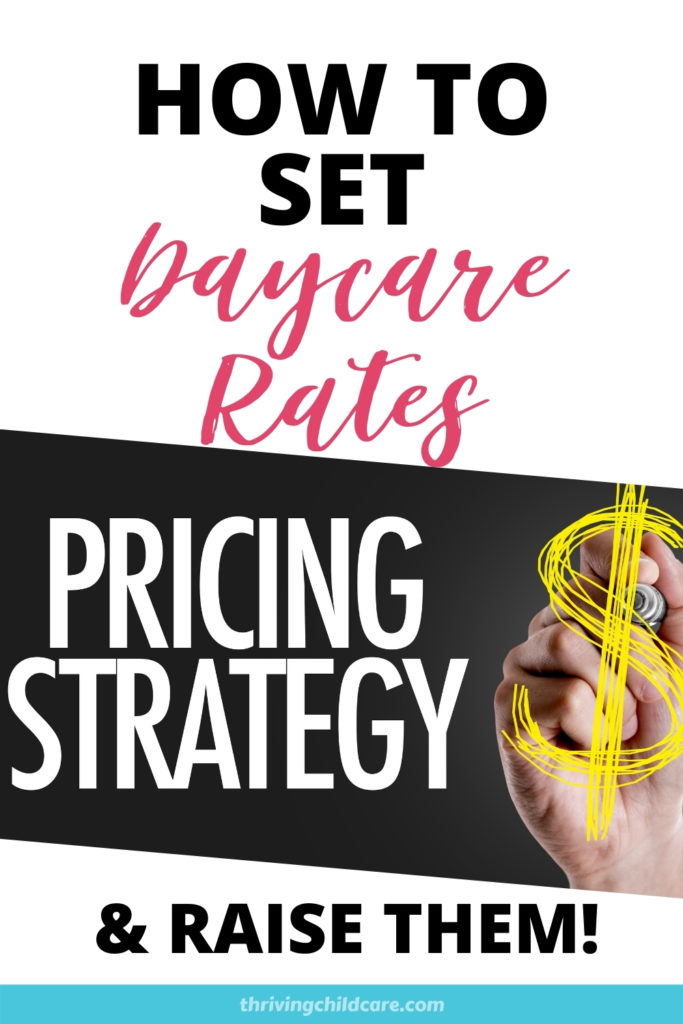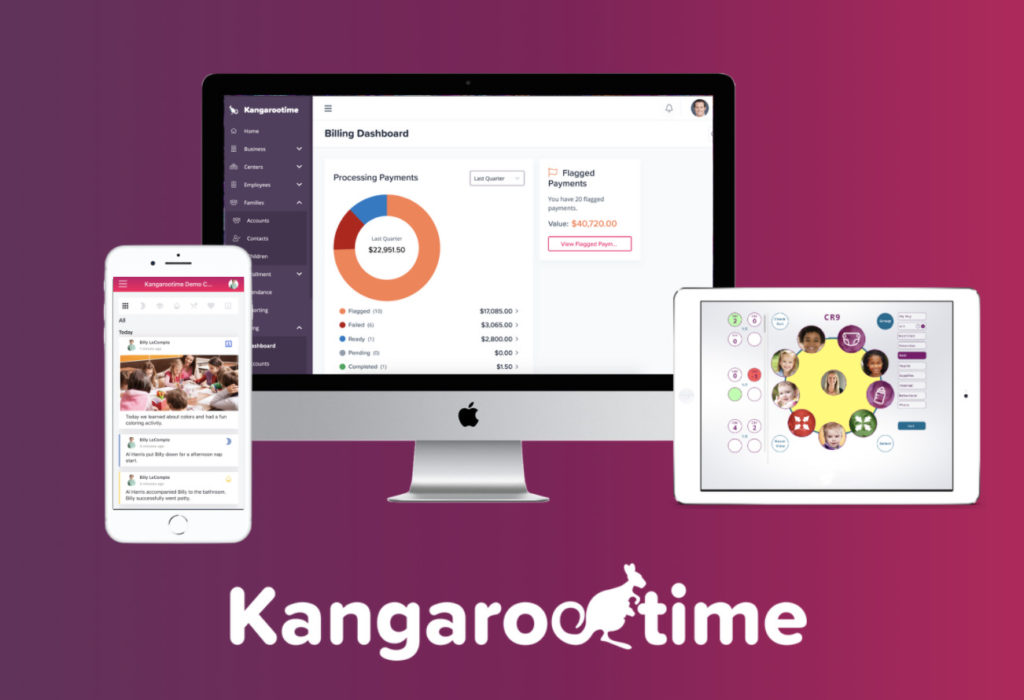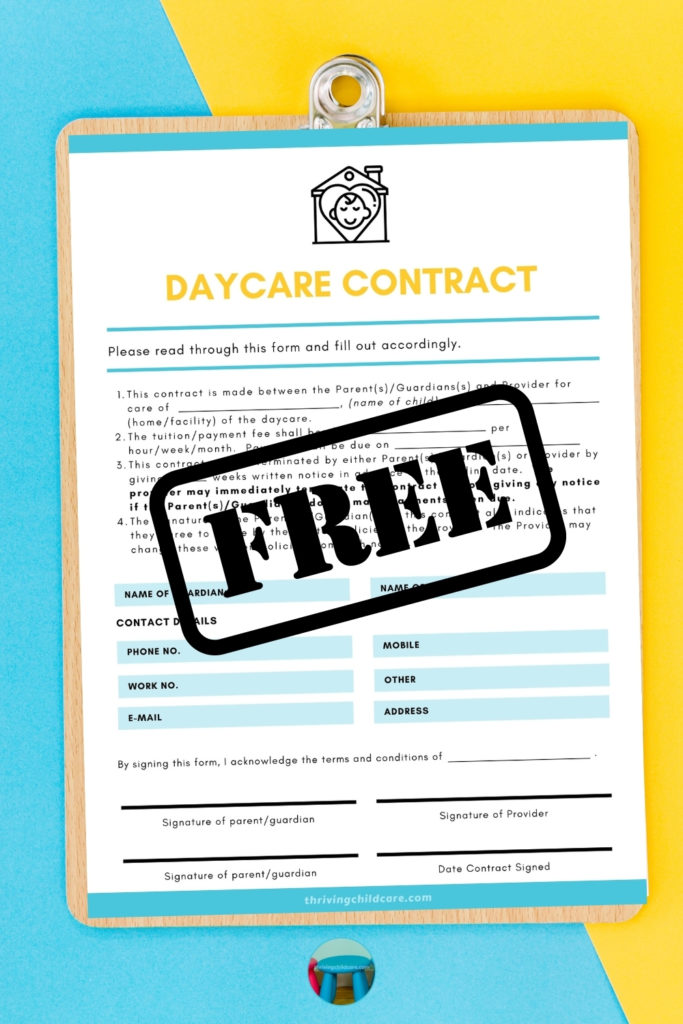Enrollment is something that is constantly on a childcare provider’s mind. Of course, you need children to enroll in your program, but if you do not consider what you will charge, even if all your enrollment spots are filled you still may not bring in enough income to make your business viable. It is absolutely imperative to know how to set your childcare rates and when to raise them.
Today, I want to talk to you about why it is important for a childcare provider to consider how they will set their rates and why they should charge that. Then, because this can be such a make-or-break issue, I will continue the discussion addressing how to successfully (and professionally) convey your rate policy to your potential clients as well as how and when to raise your rates in Part 2.
How to set your rates and when to raise them
How to set your childcare rates
This can be the single most difficult thing for a provider to do. For many people, it can just be uncomfortable to talk about money. Maybe we feel that we are charging to care for children and that feels wrong.
Assets to your business should be reflected in your rate of pay.
It is so important to know your worth. If you have education in the field of child development, have been in business for a number of years or have specialized experience, all of those are assets to your business and should be reflected in your rate of pay.
Just like any profession, providers deserve to know what their income will be. You wouldn’t take a job at a fast-food restaurant if you knew it wasn’t going to be enough income.
That is, of course, assuming you have an option, and you do.
Get some help
While demographics do play a huge part, providers should consider the long hours involved and whether or not your rate should be closer to the minimum wage or rate in your area.
Fortunately, this is an area where your local childcare resource center can be of great assistance. They typically will track rates in your area for childcare tuition and provide this information to both providers and parents.
This information can be very helpful in how to set your childcare rates.
The truth is, with the expenses and expenditures that we have when accompanied by the possibility eventuality of the enrollment dropping, we can very easily wind up not generating enough income to support the childcare let alone a personal income.
Know what your rates are
I would encourage anyone who is in the childcare business to do this exercise:
When it comes to setting rates first look at the hours that a child is attending your childcare. Now divide that number by your weekly rate that you charge or intend to charge as tuition. You might be surprised at what that final figure per hour rate actually is.
[raw_html_snippet id="tuition worksheet content upgrade"] |
So let’s take a closer look.
Let’s say you charge a rate of $150.00 for a full-time child per week. The child attends daily and typically spends nine hours at your childcare. Nine hours multiplied by five days a week equals 45 hours. Yeah, now let’s divide that 45 hours into the $150 that is paid. The actual hourly rate is $3.33.
In my state of California that is nearly 1/4 the minimum hourly wage of nine dollars an hour. And while the reality is that I probably could not charge the twelve dollars an hour rate and remain competitive, by comparison, the larger daycare centers in my area do seem to be about at that rate. This would put their weekly tuition closer to $400.00 a week.
Of course, the larger facility does have more overhead like a larger staff, supplies, etc. The rate that they charge is to ensure that the business can withstand the dips and dives of the annual fluctuations in enrollment and stay in business. A sole childcare provider should also consider the same strategy.
Listen, when I did this exercise years ago, I am embarrassed to say, I was actually shocked. Even worse, it turns out that some families at my childcare were actually paying a rate of less than three dollars an hour.

Do the Math
You might make the argument that even though the rate of $3.33 per hour seems low when multiplied by the number of children enrolled, that raises the actual income of the business.
While that is true, consider this; if a provider has 5 children in her program in the Spring that she is charging $150 per week, that $750 weekly income could drop $150 or $300 if her enrollment drops by one or two children in the Fall.
It’s best to do the math ahead of time.
Although we must consider what similar businesses in the area charge, however, most providers have a maximum number of spots that can be filled.
Oftentimes, if you’re lucky, those clients will remain with you for 2 to 3 years. That being the case, if your rate is too low you will be stuck with that amount or forced to increase your rates very shortly.
This could, in turn, drive those same clients away. I have found it’s best to do the math ahead of time.
Tomorrow, we will address just how you can develop a strategy to look at what you are charging (or plan to charge), how to make sure it is enough, and when & how to raise your rates.












